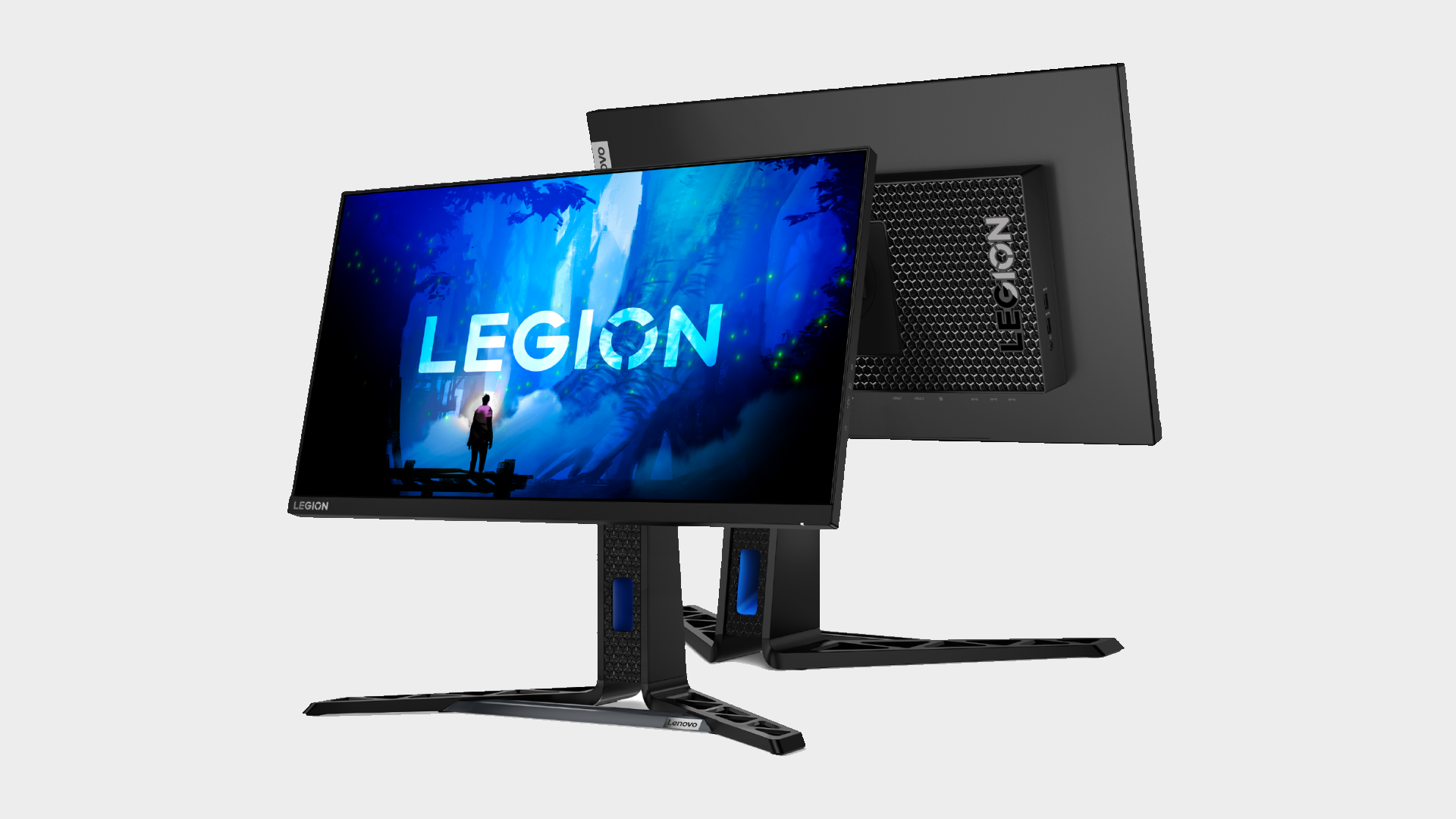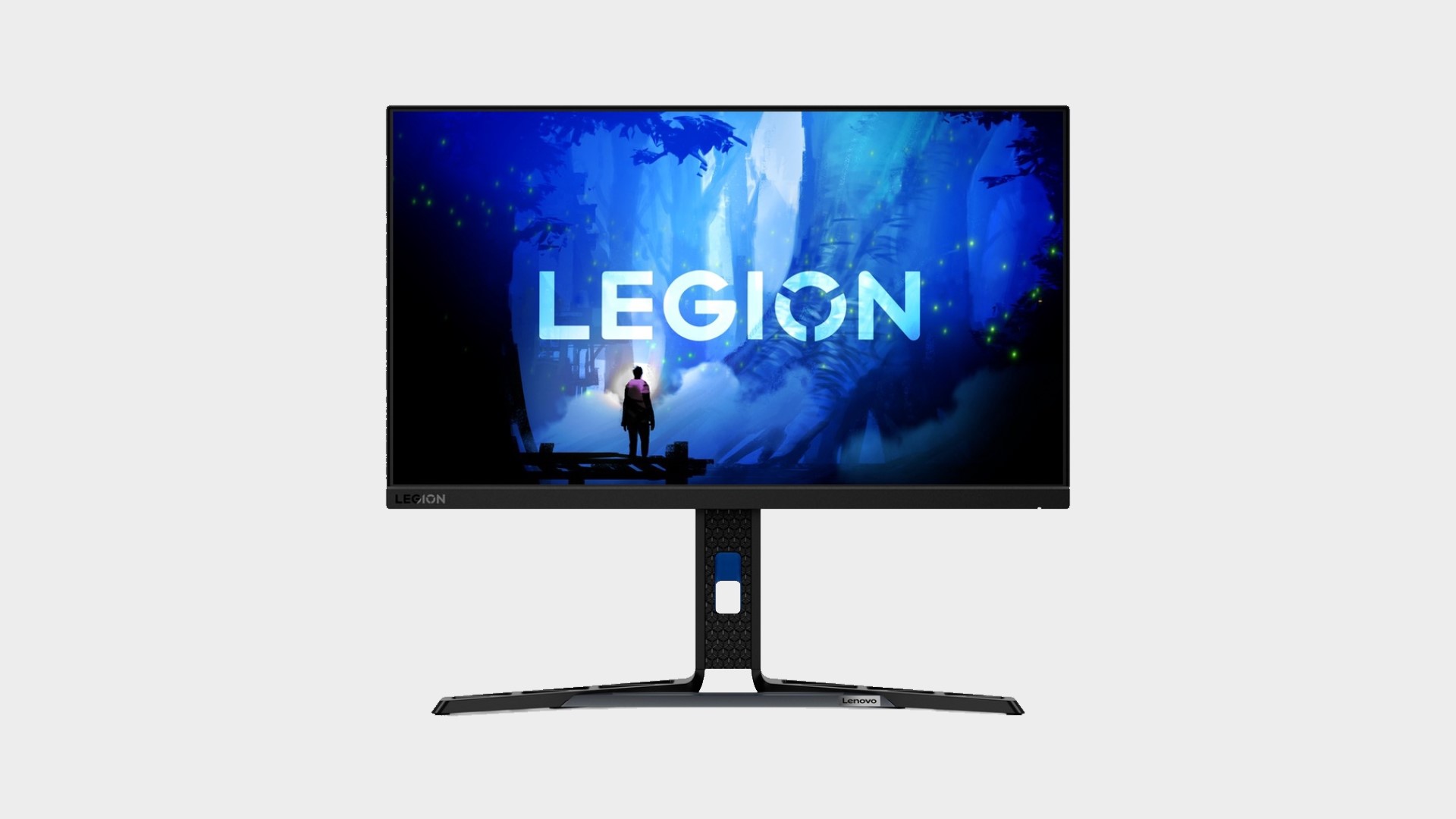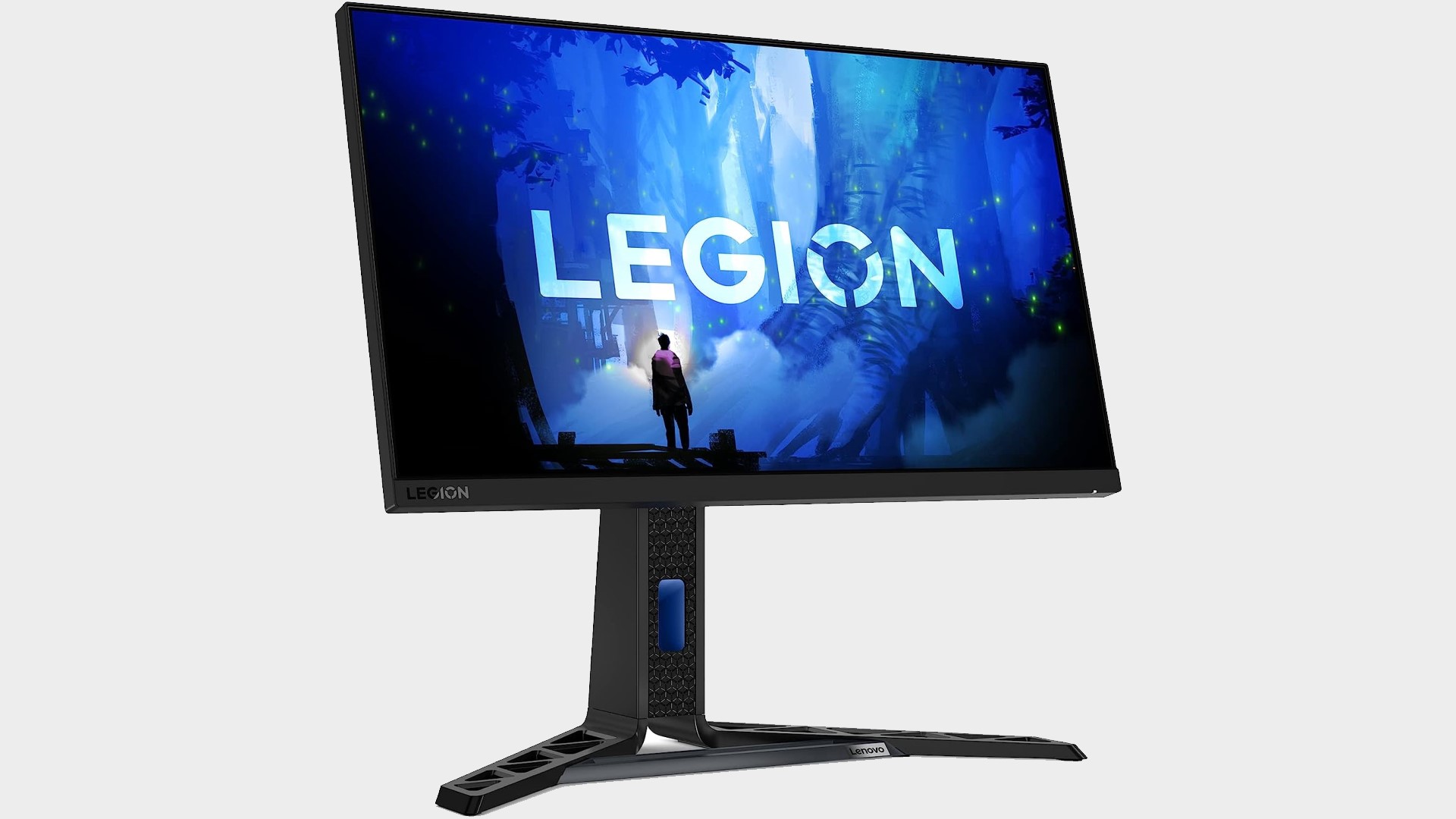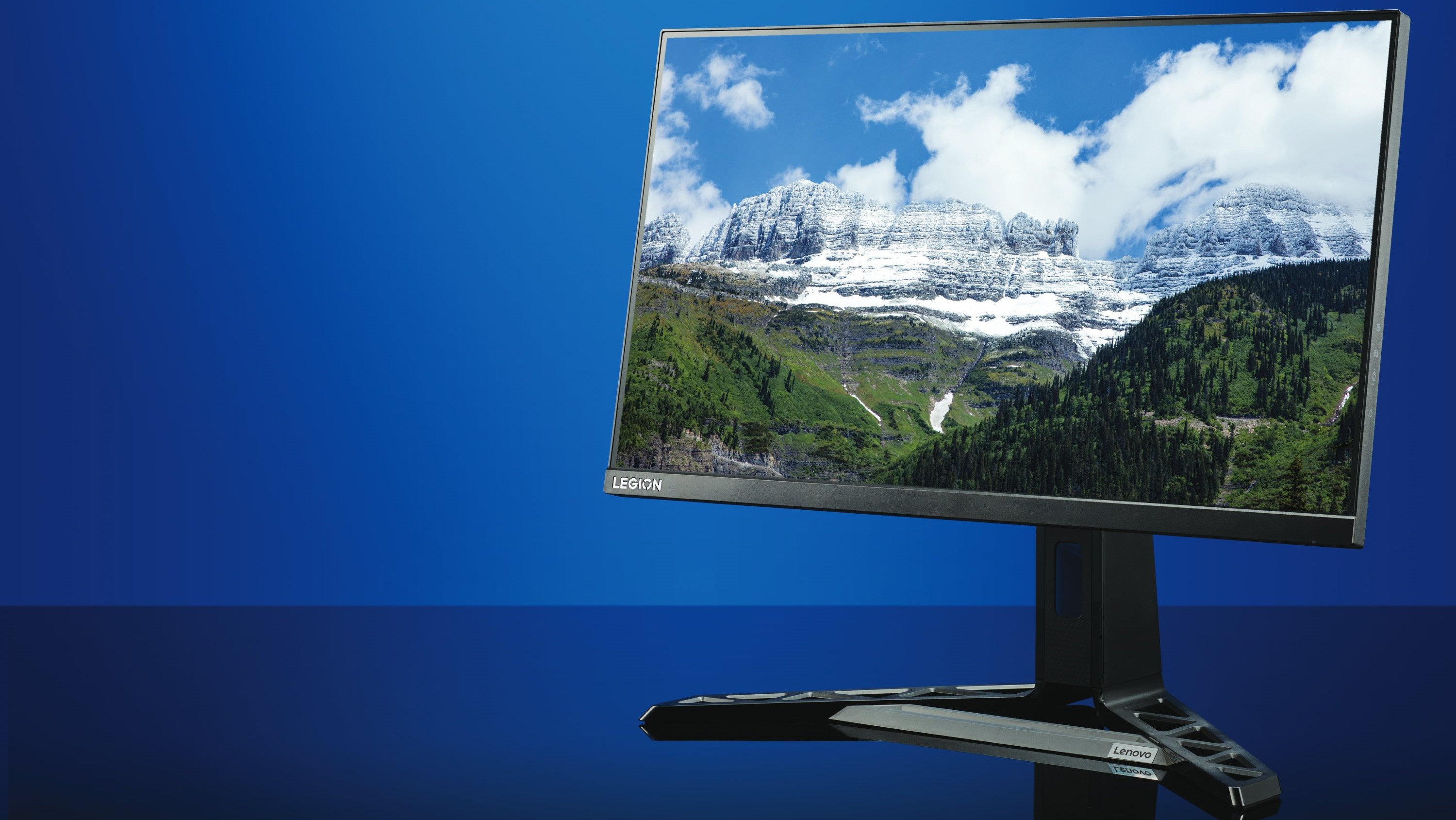GamesRadar+ Verdict
If speed is what you're about, the Lenovo Legion Y25-30 absolutely delivers on both latency and response. It's also pretty punchy with reasonable entry-level HDR support. But it can't match the detail of slower but higher resolution 27-inch monitors for about the same money.
Pros
- +
Pacey IPS panel
- +
Nice image quality
- +
Good build quality and features
Cons
- -
A little bit pricey for a 1080p panel
- -
Limited HDR support
- -
Poor pixel density compared to 1440p
Why you can trust GamesRadar+
Plenty of pace. Or all the pixels. That's the key conundrum facing gamers these days. Well, it is if you're on at least a bit of a budget. Enter the Lenovo Legion Y25-30. It's a 25-inch 1080p panel and it's all about the speed.
After all, for less money you can actually get a 1440p monitor. Not just any 1440p monitor, but a decent gaming-optimised model running at 144Hz. In fact, at this rough price point you're not far off a 34-inch ultrawide 144Hz territory. Yikes.
In other words, you really have to value high frame rates and low latency to consider the Lenovo Legion Y25-30 as one of the best gaming monitors on the market. Of course, that means this 280Hz panel is really only suitable for the PC. Sure, it will play fine at 120Hz with Sony and Microsoft's latest consoles. But you'll be paying a big premium for capabilities you won't be able to access.
| Price | $320 / £280 |
| Screen Size | 25-inch |
| Resolution | 1,920 x 1,080 |
| Panel Type | IPS |
| Brightness | 400 nits peak |
| Response Time | 1ms |
| Refresh Rate | 280Hz |
| Ports | 1x DisplayPort 1.4, HDMI 2.0, 4x USB hub |
Design & Features

Lenovo's Legion gaming hardware isn't always the cheapest, but it is very nicely put together. The Legion Y25-30 is no exception. You get that signature Legion style which is technical and slick without drifting into the slightly adolescent excesses of some gaming brands. Slim bezels on three sides of the 25-inch panel ensure a contemporary look, too, and the stand adjusts every which way including tilt, swivel, height and even rotation into portrait mode if that's your thing.
As for connectivity, you get a pair of HDMI ports and a single DisplayPort 1.4 interface. There's also a quad-port USB-A hub, but no USB-C support. So, you can't have single-cable connectivity to a laptop and keep it charged while driving the display, albeit for a gaming-focussed rather than productivity display that's probably an inconsequential omission.
Providing adaptive refresh is AMD's FreeSync Premium, so both AMD and Nvidia graphics cards will get on just fine, and HDR support takes the form of VESA DisplayHDR 400 certification, which is the very lowest specification for an HDR-compliant monitor.
Performance
The Lenovo Legion Y25-30 is pretty punchy straight out of the box thanks to its peak brightness of 400 nits. Sure, this isn't a true HDR monitor. There's no local dimming. But the IPS panel is vibrant and brighter HDR content certainly sizzles.
What this class of monitor can't do is combine that with fine contrast control. The black levels are decent for a conventional IPS panel, but nothing compared to a mini-LED or OLED monitor.
Anyway, speed is what this thing is all about and it certainly delivers. Slightly annoyingly, the maximum refresh of 280Hz is accessed as an "overclocked" setting in the OSD, which is a bit of a gimmick. That gives the impression that you're flirting at the edges of this monitor's capabilities when in fact it'll do 280Hz just fine and all day long.

Anyway, humming along at 280Hz, there's basically no discernable latency. Flick your mouse and the screen updates. It's that simple. You'd have to be a very serious esports addict to decide you needed something faster.
As for pixel response, which is a slightly separate though related issue to latency, this 1ms panel is a very quick monitor in its IPS class. Yes, OLED monitors are even better. But they're also multiples more expensive and the subjective experience isn't dramatically, life-changingly better when it comes to response. This thing is quick, make no mistake.
What it doesn't offer, however, is oodles of image detail. 1080p on a 25-inch monitor doesn't exactly make for cutting edge pixel density and when it comes to sharpness and clarity this is definitely a step down from a 27-inch 1440p panel, let alone 4K.
But then that's the choice you have to make. At this price point, you can't have 1440p and over 200Hz refresh. More to the point, even if you could, you'd then need to invest heavily in terms of graphics hardware to make the most of that capability on a higher resolution screen.
Should you buy the Lenovo Legion Y25-30?

What the Lenovo Legion Y25-30 offers is a relatively accessible way into truly high refresh gaming. This monitor isn't itself particularly cheap. But you can really lean into that 280Hz refresh without the need for a $1,000 GPU.
At the same time, you get good design and build quality, a decent feature set and nice overall image quality from a quality IPS panel, albeit the inherent pixel density of this class of 1080p monitor is always going to be limited.
So, it really comes down to the type of gaming and wider computing you're aiming at. If you're a bit of an all round gamer and you enjoy not just fast paced shooters but adventure titles, strategy games and the rest, and also if you want a display that doubles nicely for web browsing or content creation and consumption duties, this probably isn't the best choice.
In that scenario, a 144Hz 1440p panel will be plenty quick enough and offer much more in-game detail and a better desktop experience in Windows. But if speed and response are absolutely your main priorities, well, stick the Lenovo Legion Y25-30 on your shortlist. It's a seriously pacey little 1080p panel.
How we tested the Lenovo Legion Y25-30
As a high refresh 1080p panel, the Lenovo Legion Y25-30 is all about speed. So we ran it through a gauntlet of shooters including Apex Legends and Fortnite to get a feel for response and latency. Of course, you might not be all about esports, so visuals matter too. Cyberpunk 2077 is our go-to game for assessing HDR and ray-tracing sizzle, while we'll take any excuse to play a little The Last of Us: Part I. We also assess ergonomics and build, plus features including connectivity and OSD menu options in coming to our overall conclusions on this monitor's pixel-pumping prowess.
For more information on how we test gaming monitors, check out the full GamesRadar+ Hardware Policy.
We're also rounding up all the best 4K gaming monitors as well as the best monitor for PS5 and the best monitor for Xbox Series X as well.
A serious dissertation on the finer points of input lag and overshoot followed by a forensic examination of AI-accelerated temporal upscaling. Such is a routine day in the working life of long-time tech wordsmith, Jeremy Laird. Along with GamesRadar, Jeremy’s 15-year back catalogue includes a host of tech and gaming outlets, including TechRadar and PC Gamer, not to mention contributions to mainstream media from the Independent to the Evening Standard. Complimenting Jeremy’s debilitating addiction to all kinds of digital hardware, he is also afflicted by an obsession with and a significant occupational sideline in cars and automotive technology.




